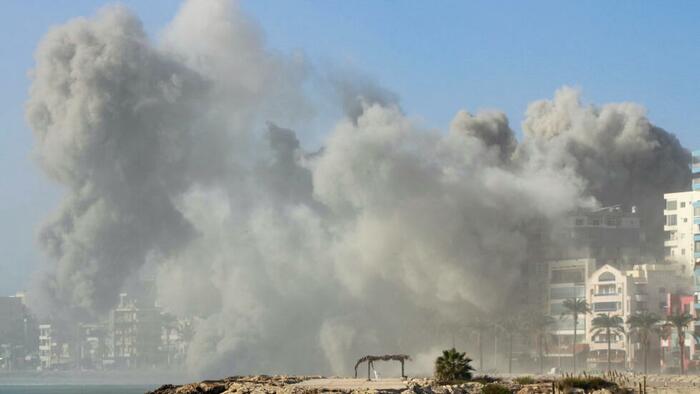Tensions between Israel and Iran appear to have momentarily subsided; however, the conflict in Lebanon has escalated significantly, particularly in the coastal city of Tyre. Over the past week, Tyre has been subjected to relentless Israeli airstrikes, culminating in a series of devastating attacks that resulted in numerous casualties and widespread destruction. The ongoing bombings have created such heavy smoke that they have obscured the city’s landscape. Initially reported by Lebanese state media, the Israeli military had issued evacuation orders for large parts of Tyre before launching the strikes, underscoring the severity of the situation in a region already burdened by historical and cultural significance as a UNESCO World Heritage site.
Recent airstrikes have targeted residential areas and critical infrastructure, as reported by various journalists on the ground. An Al Jazeera correspondent described the relentless bombardment of Tyre, indicating that the city’s historic center was being transformed into ruins as residential buildings were reduced to rubble under successive air raids. Eyewitness accounts highlighted that the attacks extended to multiple residential zones, leading to heightened destruction, more victims, and a pervasive atmosphere of fear among the city’s residents. Tyre, which houses a predominantly Shia Muslim population alongside a significant Christian minority, is not recognized as a major stronghold of Hezbollah; nevertheless, the attacks appear aimed at exerting political pressure on Lebanon’s government to influence Hezbollah’s operations.
Analysts suggest that the Israeli military aggression in Tyre is tactically targeting the Amal movement, associated with Parliament Speaker Nabih Berri, who has been identified as negotiating on behalf of Hezbollah. Reports indicate that Israel’s focus on Tyre could signify an effort to destabilize the Amal movement and its leadership while intensifying pressure on Hezbollah and its alliances. The escalation of violence in this context has been interpreted as a sign that Israel is unwilling to explore ceasefire options, despite escalating tensions. The situation remains fluid, as both sides appear steadfast in their positions: Israel insists on negotiations under military pressure, while Hezbollah maintains its stance that negotiation is off the table during such active conflict.
International calls for restraint have emerged amid this rising violence. European Union foreign policy chief Josep Borrell has emphasized the need for an “immediate ceasefire” in Lebanon, condemning the Israeli Defense Forces (IDF) for their aggressive actions, which reportedly included attacks on UN peacekeepers stationed in southern Lebanon. Borrell’s declarations mirror broader frustrations within the international community regarding the ongoing conflict, indicating a dual necessity for addressing humanitarian concerns alongside preserving geopolitical stability in the region. However, Hezbollah’s persistent rocket fire into northern Israel, specifically targeting areas like Haifa, further complicates the landscape of negotiations and peace talks.
On the military front, the IDF reported a significant uptick in rocket attacks, with 30 rockets fired into the Western and Upper Galilee regions on a single day alone. The IDF claimed that at least 115 projectiles were launched towards northern Israel, with some intercepted by their Air Force. This barrage of attacks highlights the ongoing hostilities and the challenging dynamics on the border. Israel’s articulated objectives include pushing back Hezbollah and securing the safety of Israeli residents, which may necessitate a sustained military campaign. As each side continues to demonstrate resolve, the prospects for de-escalation and diplomatic engagement appear increasingly tenuous.
In conclusion, while the immediate threat of war between Israel and Iran might seem momentarily mitigated, the situation in Lebanon, particularly in Tyre, exhibits escalating violence fueled by complex political motives and regional power dynamics. The airstrikes have exacerbated an already precarious humanitarian situation while demonstrating the fraught relationship between regional powers and local factions. The lack of dialogue, coupled with increasing military exchanges, signifies a complex and protracted conflict. As the international community grapples with calls for ceasefire and peace, the realities on the ground indicate a challenging path ahead for stability in Lebanon and beyond.

